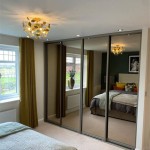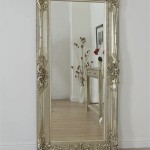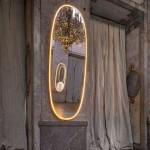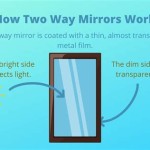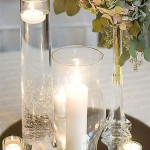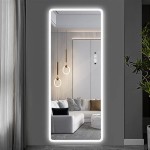How To Install a Mirror with Lights
Installing a mirror with integrated lights can significantly enhance the ambiance and functionality of a bathroom or vanity area. This article provides a comprehensive guide to successfully installing a lighted mirror, outlining the necessary tools, materials, and steps involved. Proper planning and execution are crucial for a safe and effective installation.
1. Assessing the Installation Area and Mirror
Before beginning the installation, carefully measure the dimensions of the mirror and the designated wall space. Ensure the wall area is structurally sound and capable of supporting the mirror's weight. Verify that there are no obstructions, such as pipes or electrical wiring, behind the intended installation area. Check the mirror's specifications for any particular mounting requirements or recommendations from the manufacturer.
2. Gathering the Necessary Tools and Materials
Assembling the required tools and materials beforehand will streamline the installation process. Typically, this includes a stud finder, measuring tape, level, pencil, drill with appropriate drill bits (including a masonry bit if installing on a brick or concrete wall), screwdriver, wire strippers/cutters, wire connectors, electrical tape, safety glasses, and work gloves. Consult the mirror's instructions for any specific mounting hardware required.
3. Electrical Considerations and Safety Precautions
Most lighted mirrors require a direct electrical connection. It is strongly recommended to turn off the power to the circuit breaker that supplies electricity to the area where the mirror will be installed. Use a non-contact voltage tester to double-check that the power is off before proceeding with any wiring. If unsure about any electrical aspect of the installation, consult a qualified electrician. Adhering to electrical codes and safety regulations is paramount.
4. Mounting the Mirror: Different Methods
Several methods are available for mounting lighted mirrors. Some mirrors come with pre-installed mounting brackets, while others require separate installation. Common methods include using J-clips, Z-clips, or French cleats. The chosen method will depend on the mirror's design and the wall's structure. The manufacturer’s instructions should provide guidance on the recommended mounting method and hardware.
For heavier mirrors, it's generally advisable to mount directly onto wall studs for added stability. Use a stud finder to locate the studs and mark their positions on the wall. Pre-drill pilot holes before inserting screws to prevent the wall material from splitting. If mounting onto a surface other than wood studs, such as drywall or masonry, appropriate wall anchors will be required. Ensure the anchors are rated to support the weight of the mirror.
5. Connecting the Electrical Wiring
Once the mirror is securely mounted, connect the electrical wiring according to the manufacturer's instructions and local electrical codes. Typically, this involves connecting the mirror's wires to the existing wiring in the wall, using wire connectors and securing them with electrical tape. Ensure all wire connections are secure and properly insulated to prevent electrical hazards. If the mirror includes a ground wire, connect it to the ground wire in the junction box or a grounding screw.
6. Testing the Installation and Finalizing
After completing the wiring, turn the power back on to the circuit breaker and test the mirror's lights and any other integrated features. Carefully inspect all connections and ensure there are no exposed wires. If everything functions correctly, proceed with any final steps, such as installing covers or trim pieces that may be included with the mirror. Clean the mirror surface to remove any fingerprints or smudges.
7. Troubleshooting Common Issues
If the lights do not function after installation, double-check the following: ensure the power is on at the circuit breaker, verify the wire connections are secure and correctly wired, and check the bulb or LED components for any defects. If the problem persists, consult the manufacturer’s troubleshooting guide or contact a qualified electrician. For mounting issues, such as instability, ensure the mirror is mounted to studs or that appropriately rated wall anchors are used.
Following these steps and adhering to safety precautions will help ensure a successful and safe installation of a mirror with lights, enhancing both the aesthetics and functionality of the space.

Diy Led Mirror Installation Personal Tips And Review

How To Install Led Mirror Lights Installation Instruction For Technology News Global Lighting E Commerce

Led Lighted Mirror Installation Cwc Electric Llc Electrician In Topeka Lawrence Surrounding Towns

How To Install A Bathroom Vanity Mirror Light

How To Diy Vanity Mirror With Led Strip Lights

How To Install An Led Mirror Bokih Bathroom

How To Diy Vanity Mirror With Led Strip Lights

How To Install Bathroom Led Mirror

How To Diy Vanity Mirror With Led Strip Lights

How To Install An Led Mirror Bokih Bathroom


